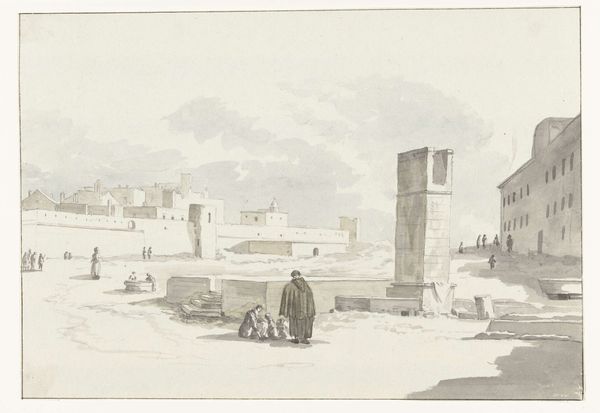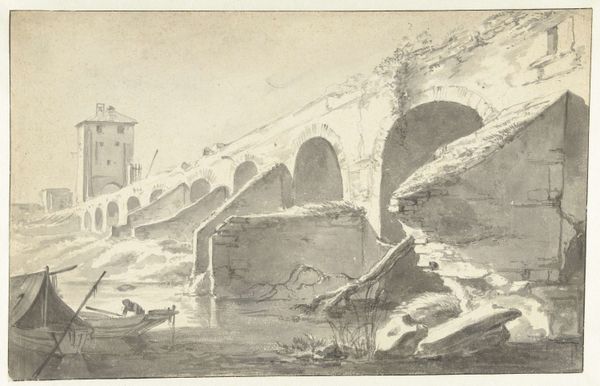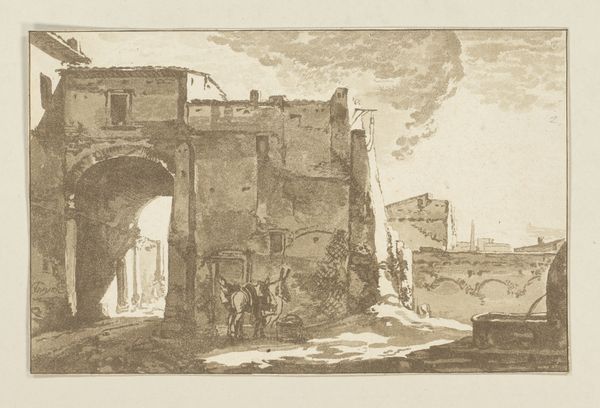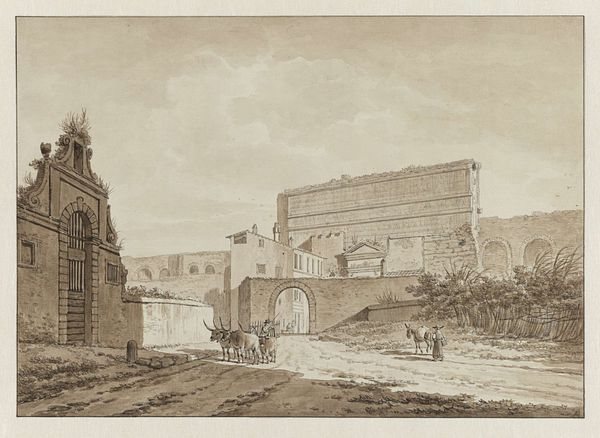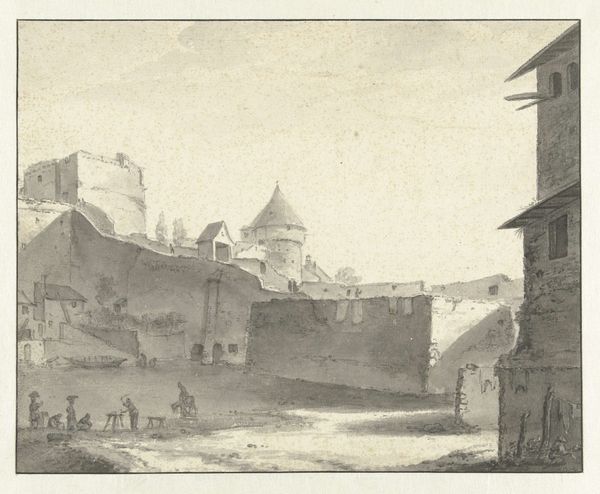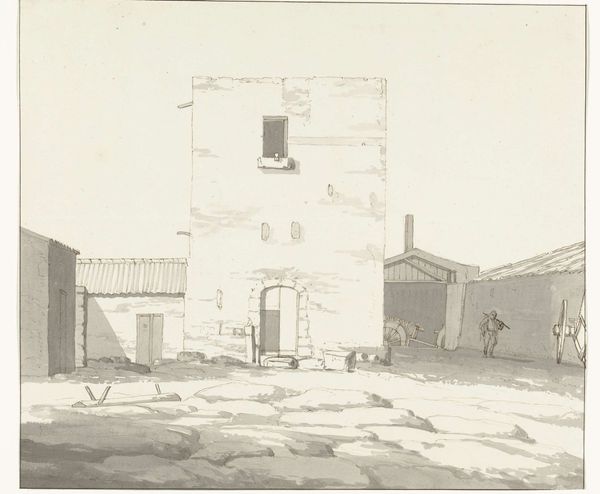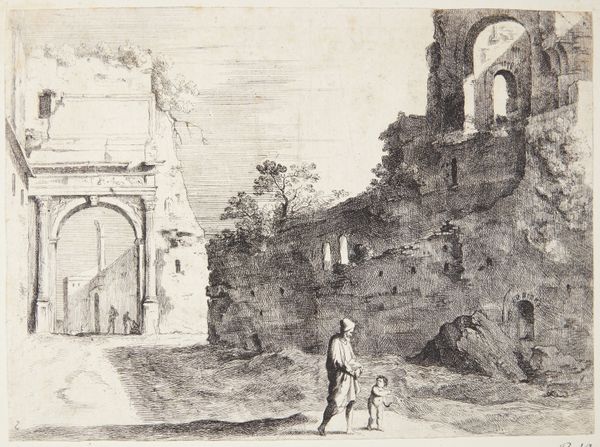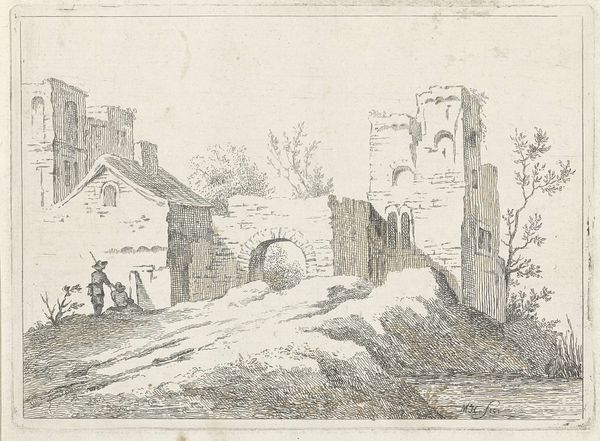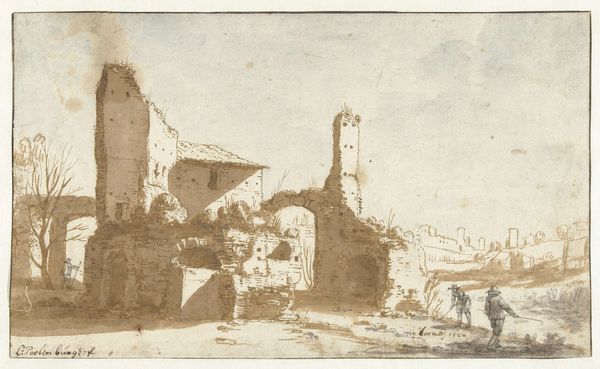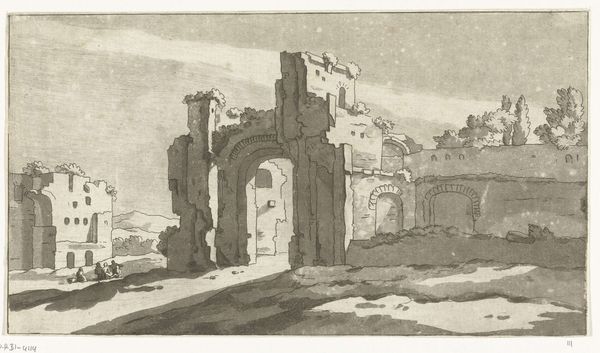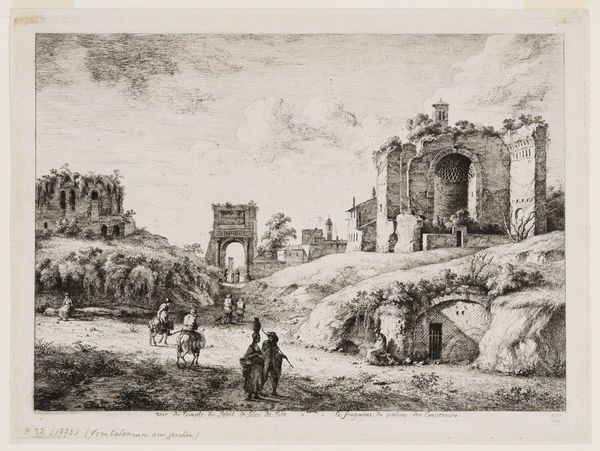
drawing, paper, ink
#
drawing
#
neoclacissism
#
landscape
#
paper
#
ink
#
cityscape
#
academic-art
Dimensions: height 182 mm, width 254 mm
Copyright: Rijks Museum: Open Domain
Curator: Just look at how the light catches the old stone! This is Louis Ducros's "Ruins on the Way to Terracina," a cityscape rendered in ink on paper around 1778. The Rijksmuseum holds this beauty, if you want to see it up close. Editor: I am immediately struck by the contrast between decay and life. You have the crumbling architecture of some ancient civilization alongside these figures who seem deeply absorbed in a transaction. What's your take? Curator: Well, knowing Ducros, it’s likely he was fascinated by how time alters all things. It feels like he’s contrasting the ambition of the ancients with the mundane realities of daily life for us, using neoclassicism conventions in service of making you contemplate life's fleeting nature, like dust motes in sunlight. Editor: The medium certainly enhances that feeling. The ink washes are so delicate, almost ethereal. But what was the economy like at the time this was created? These people seem to be involved with laborious transactions. What can we infer from the work itself about the means and costs of production here? Curator: Absolutely! This drawing shows us how the materials speak volumes! This piece makes you wonder if he experienced anxiety in the way things of value from other generations have lost their usefulness for this particular group. It feels rather self-aware when we think about what an artist’s intentions and goals are! Editor: Self-aware and deeply intertwined with the physical world. Consider the labor to create paper and ink in 1778! Every aspect involved hand production. I’m fascinated by how Ducros implicates his own labor within the wider network he's illustrating. This isn’t just about aesthetic beauty; it's about showing material practices. Curator: Exactly. To me, Ducros manages to show that it isn’t just some dead image; the scene remains alive through art itself. Through these gentle gradations, you sense that everything has its place. The past lingers. Editor: And it shapes the present. Ultimately, thinking through its creation shows the weight of the past – its impact is literally tangible. I see those ink washes, and it reminds me that the image isn’t abstract! Curator: Very much like life. A ghost of what once was becomes inspiration. Editor: Precisely. Ruins offer material proof of constant transformation, decay and revival. The image reveals just as much about the artist’s world as it hides.
Comments
No comments
Be the first to comment and join the conversation on the ultimate creative platform.
